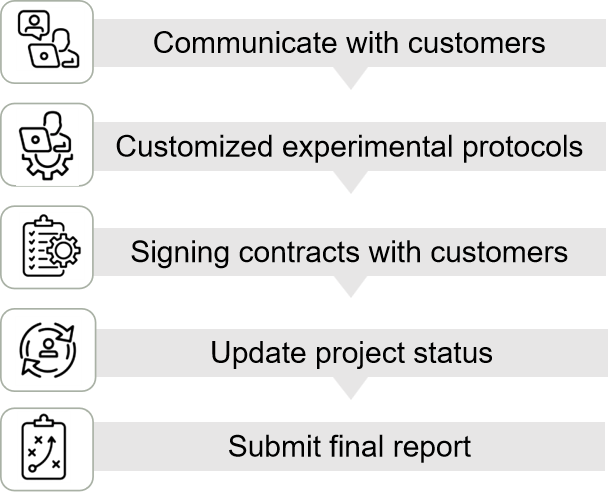Granulovirus (GV) infects the dermis, adipose tissue, and blood cells of lepidopteran insects. When the larvae are infected, they show loss of appetite, weakness, slow movement, swelling, and discoloration of the abdomen. This is followed by a rupture of the epidermis and a flow of fishy, cloudy, milky pus. Currently, GV is effectively used for biological control.
Lifeasible is committed to providing comprehensive and effective solutions for biopesticide development. We are dedicated to developing insecticides against insect viruses. We offer virus insecticide solutions that can help control agricultural and forestry pests.
 Figure 1. Structure observation of the Mythimna (formerly Pseudaletia) unipuncta granulovirus Hawaiian strain (Li Y, et al., 2021).
Figure 1. Structure observation of the Mythimna (formerly Pseudaletia) unipuncta granulovirus Hawaiian strain (Li Y, et al., 2021).
When GV is swallowed by insects, it is lysed in the midgut intestinal lumen and releases many virus particles, which not only replicate new daughter viruses in the nucleus of midgut cells but also form part of the granulosa and the newborn virus penetrates out of the midgut cells into the blood cavity, where it infects other sensitive tissues. Insect trauma and egg laying by parasitic natural enemies can cause GV to subcutaneously infected, and can also be transmitted vertically via eggs.
Endangered larvae show typical symptoms such as slow movement, swollen body segments, and a milky white body color and die 4-7 days after infection. The body wall of dead larvae is fragile, and many granules flow out after breaking. The virus can infect other healthy larvae through the feces of diseased worms or dead worms, resulting in mass larval mortality.
Characteristics of GV insecticide action

Lifeasible is an industry-leading biotechnology company committed to biopesticide development and providing effective guidance and strategies for sustainable agriculture. If you are interested in us, please feel free to contact us.
References
Lifeasible has established a one-stop service platform for plants. In addition to obtaining customized solutions for plant genetic engineering, customers can also conduct follow-up analysis and research on plants through our analysis platform. The analytical services we provide include but are not limited to the following:
July 13, 2024